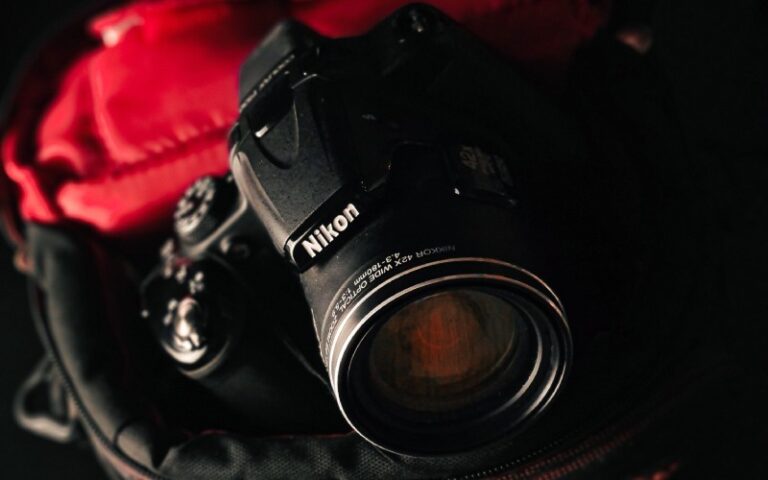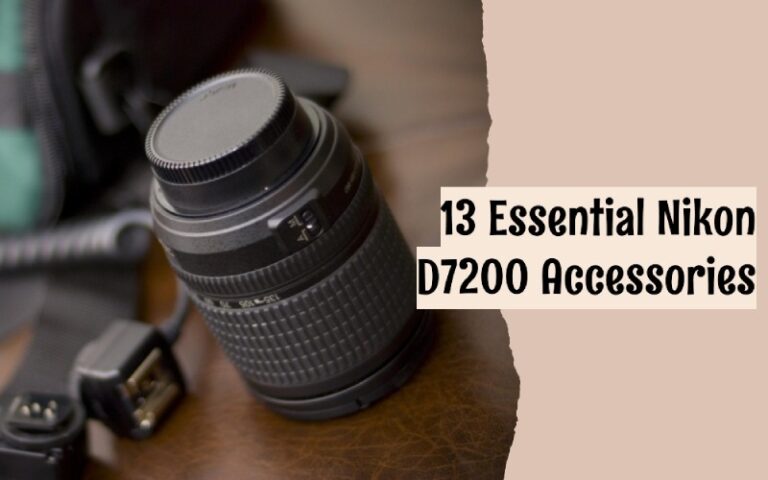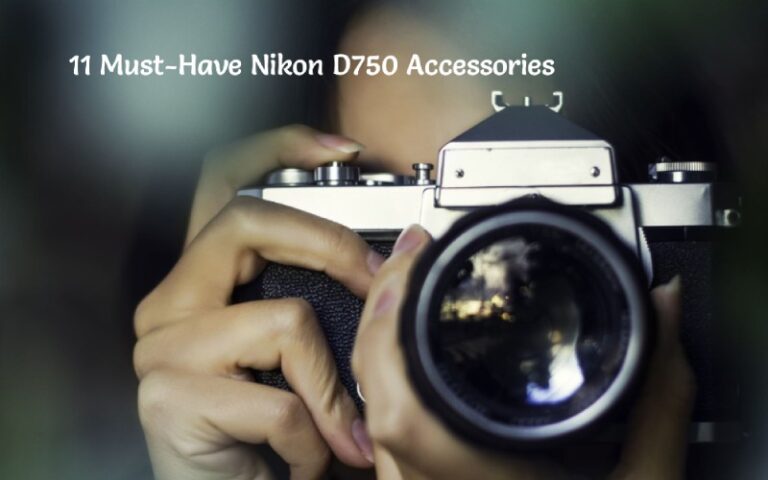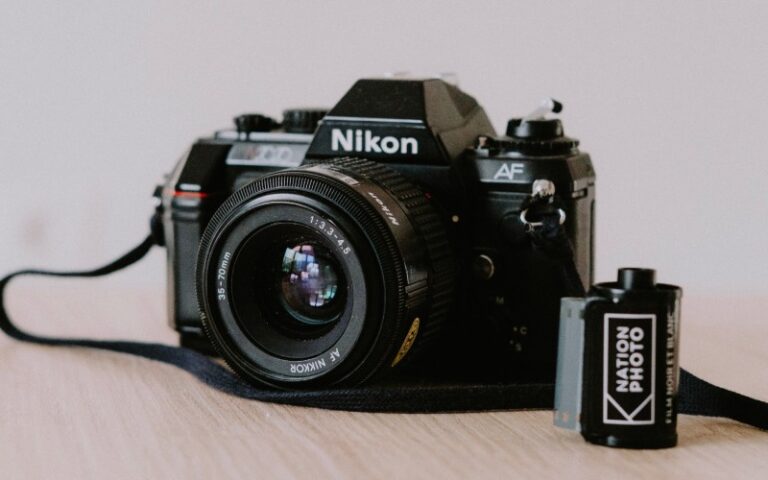Nikon F5 vs Nikon F6: Which One To Choose For Better Pictures?
If you’re still in love with film cameras instead of getting into the world of digital cameras, the Nikon F-series of 35 mm film SLR cameras are the king. But the confusion arises when you have to pick from Nikon F5 and Nikon F6. Both of them have immense popularity, right? But which one is better?
The Nikon F6 would be the better choice for photographers who require a camera that can handle fast-action photography and that’s lightweight, compact, easy-to-carry. On the flip side, the Nikon F5 is the better option for those who want a camera with a removable viewfinder and can work with its slightly slower autofocus system.
So, when comparing these Nikon F5 vs Nikon F6 camera, the best pick would depend on the user’s preference since both offer individual features. Therefore, before you take the final decision or hit the buy button, go through the whole article to know the detailed comparison between the devices.
Let’s get started.
Nikon F5 vs Nikon F6: A Quick Comparison
Before stepping into the details, here’s an ‘at a glance’ option for you in case you’re in a rush.
| Comparison Factors | Nikon F5 | Nikon F6 |
| Weight | 2.6lbs | 2.1lbs |
| Battery type | 8AA | CR123A |
| Flash sync | 1/300 | 1/250 |
| Focusing | Auto/Manual | Auto/Manual |
| Price range | $500-$700 | $2,500+ |
Key Comparisons Between Nikon F5 and F6
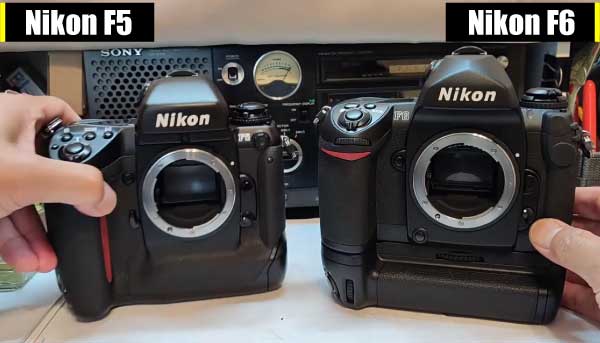
You’ve already got a quick aspect regarding Nikon F5 vs Nikon F6, this time, I’ll walk you through the detailed differences and similarities between the devices to share more knowledge with you.
Construction and Design:
Tell me whether you hate a giant-sized, bulky, and heavy camera that’s less easy to carry when you travel a lot.
If this is the case, know that the Nikon F6 features a design that looks like the D2 series with a smaller body and no vertical grip. It only weighs 975g which is one of the compelling reasons for choosing it over the F5 model.
Nikon F5 has a bulkier design and it includes a removable and replaceable viewfinder. It weighs approximately 1,200g including batteries and an 8 fps high-speed motor drive.
However, there are huge numbers of users who don’t mind carrying a bit heavier camera which offers excellent balance with a low center of mass. The elastic shoulder strap of the F5 model enhances comfort and safety.
Therefore, the F5 can’t outperform the F6 in terms of weight, construction, and design, but it has a separate user base.
The Winner: Nikon F6
Read More: How to Use External Flash on Nikon
Film Transport and Shutter:
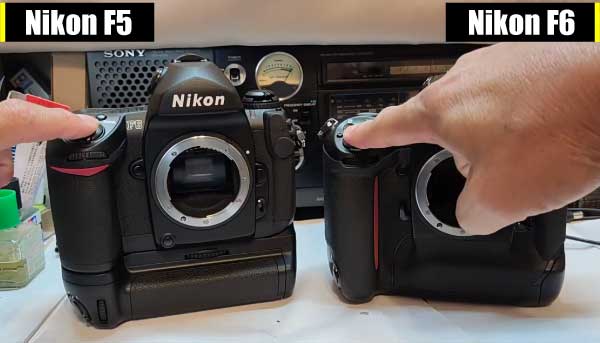
There are no significant changes in the shutters of the devices. Both are self-checking but the maximum sync speed of the F5 camera is higher than the F6. The shutter of the F5 is capable of syncing to 1/300 whereas it’s 1/250 when it comes to the F6.
However, the Nikon F6 justifies the lacking in an interesting way- it supports High-Speed TTL when you use the SB-800 flash. Some users even prefer it compared to having a sync of 1/300 because it can lower the power of Flash a bit.
Also, the F6’s shutter uses a lighter and more durable material. In short, the F6 incorporates the film transport and shutter mechanism from the F5, with some minor tweaks.
The winner: It’s a tie
Autofocus System:
As we said initially, the F6 provides more reliable and efficient autofocus performance, especially in low-light conditions. It utilizes the CAM2000 autofocus module with 11 sensors with 9 cross-hatched.
On the contrary, the F5 uses the CAM1300 autofocus module with 5 sensors with 3 cross-hatched. But still, the F5’s autofocus does a decent job for non-professional photographers or the ones who take photography as a hobby.
The F5 can focus correctly with no IR help and it uses five available autofocus sensors that improve autofocus speed.
The winner: Nikon F6
LCD Display and Menu System:

The F6 features a large LCD display (monochrome) on the back, which works like a boss for informational purposes and navigating the menu system. The F5, however, does not have a similar LCD display but instead relies on traditional dials for adjusting settings.
So, if you need a camera with an LCD display so it can show various settings, shooting information, and menu options in a clear and organized manner, going for the F6 model is the suggestion.
But if you’re okay with a more analogue or tactile shooting experience, go for the F5 as its physical dials offer a direct and straightforward way to adjust settings.
The winner: Nikon F6
Battery Type:
The F5 uses 8AA batteries, while the F6 uses a pair of CR123A batteries. The F6 also offers an optional vertical grip that supports a rechargeable lithium-ion battery that you generally use in the D2 series cameras.
So, if you prefer a more compact and lightweight power solution, go for the F6’s adoption of CR123A batteries will let you have it. And the optional vertical grip provides a more compact and lightweight power solution with extended shooting capabilities.
CR123A batteries also have a higher energy density and longer lifespan compared to AA batteries. So, photographers who prioritize portability and prefer a lighter camera setup will love this feature.
However, the CR123A battery is not as widely stocked in stores as more common battery types like AA batteries. So, you need to be prepared for that.
On the other hand, the F5’s use of AA batteries offers more versatility and easier replacement. It’s more suitable for photographers who frequently shoot in remote locations or areas where access to specialized batteries is limited.
The winner: It’s a tie
Matrix Metering:
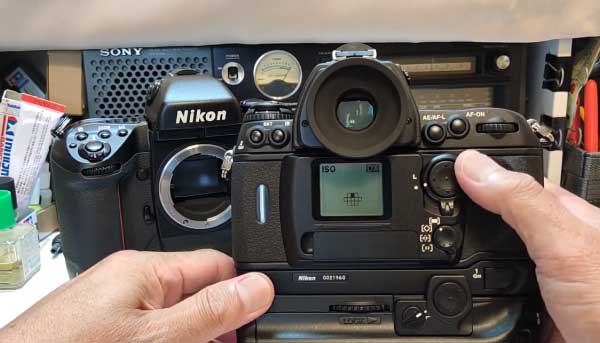
Both the Nikon F5 and F6 cameras use a colour sensor in the viewfinder for matrix metering. The matrix metering of both cameras helps them measure the light in a scene and determine the appropriate exposure settings.
By utilizing a colour sensor, the cameras can gather more accurate and detailed information about the scene’s lighting conditions.
But the F6 camera has an enhanced matrix metering algorithm. It considers additional factors such as focus and distance information when calculating the optimal exposure settings. For this, you can get more precise and reliable exposure metering results.
The winner: Nikon F6
Flash Capabilities:
Both cameras support flash metering with compatible flashes, such as the SB-600 and SB-800. However, the F6 introduces i-TTL flash metering, while the F5 supports regular TTL flash metering.
i-TTL (intelligent Through-The-Lens) flash metering will offer you a more advanced and sophisticated flash metering system compared to regular TTL (Through-The-Lens) flash metering.
It can consider factors like subject distance, ambient light conditions, and even the specific characteristics of the attached flash unit. You’ll get improved flash exposure accuracy and better overall flash performance from the feature.
And, when it comes to regular TTL flash metering, it also measures the flash output through the lens but it relies on a simpler calculation based on the camera’s metering system and predetermined flash settings.
While still effective, it will not provide the same level of precision and compatibility with advanced flash units as i-TTL.
The winner: Nikon F6
Custom Settings and Data Storage:
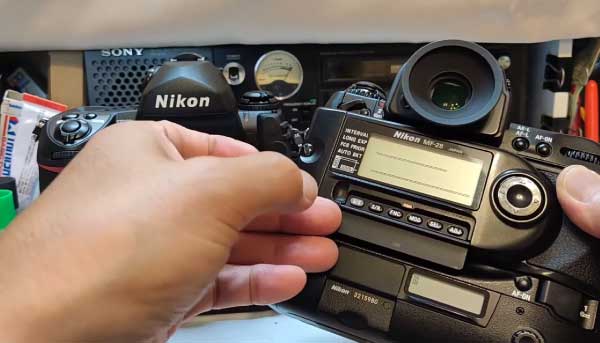
Both cameras are able to save and recall custom settings. While the F5 had Photo Secretary software for data storage, the F6 uses an optional MV-1 CompactFlash card accessory to save image information.
However, the methods of data storage are different in the two devices. The F5 uses the Photo Secretary software, which allows you to store image-related information (e.g. exposure settings, date, and time, onto external storage devices like computers).
But the F6 camera offers an optional accessory called MV-1 CompactFlash card for data storage. It lets you save image information directly onto a CompactFlash card so, you can quickly switch between preferred settings without manually adjusting lots of parameters each time.
The winner: Nikon F6
Price:
Naturally, Nikon F6 will be more expensive than the F5 since it offers a lot more features in comparison. Nikon F5’s price is around $500 whereas the Nikon F6 costs even more than $2,500. But yes, you’ll get everything you pay for.
From vintage lenses to the new CLS Flash circuitry, there are a few options on the market that are as high-quality, robust, flexible, and lightweight as Nikon F6. So, every penny you spend is worth it.
The winner: Nikon F5
Frequently Asked Questions
Can Nikon F5 use E lens?
Yes, Nikon F5 is compatible with all kinds of autofocus lenses except for the E type (most recent one) with electronic diaphragm control. It uses Ai and Ais lenses as well.
Is the Nikon F6 still in production?
No, Nikon discontinued the Nikon F6 in October 2020. It was in production for 16 years (from 1996-2004) and when it was discontinued, the F6 was the last film SLR still in production.
What Is The Shutter Life of Nikon F5?
The shutter life of the Nikon F5 is tested and rated for around 50,000 cycles. This means that the shutter will function up to approximately 150,000 exposures before you need to service or replace it.
Verdict
Hopefully, you’ve got what you were looking for. We’ve tried our best to bring the facts about the Nikon F5 vs Nikon F6. Both are excellent devices but the answer to ‘which one is better?’ lies in your needs and preferences.
But if you ask for a general answer, here you go- although the F5 has its merits, the F6 offers a more advanced exposure system, improved autofocus, and better flash capabilities.
Remember that no matter which option you go for, use and maintain the device gently to have a longer journey with it.
Good luck and pleasant shooting to you!

I am Terry E. Collin.
I have some top branded cameras, especially Canon R6, Canon EOS 60D and 70D, Nikon D700, Lumix G9, Lumix G85, and many more. I have been doing photography for 5 years with Top Brand cameras like Canon, Sony, Nikon, Panasonic, etc.
The purpose of creating this blog is to share my personal experience and expertise with most popular cameras.
Let’s share some of them one by one in this blog For FilmingLab Audience


